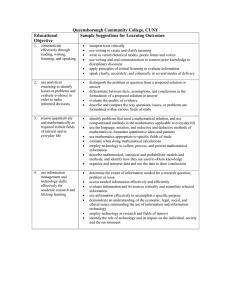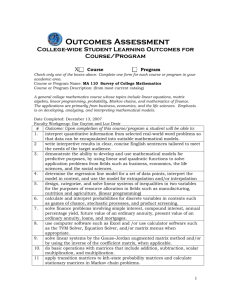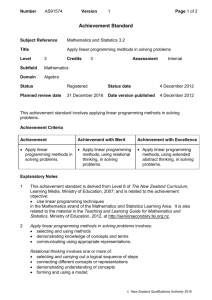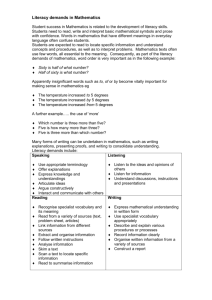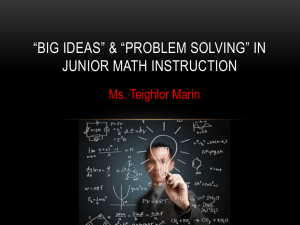Alien Invasion
advertisement
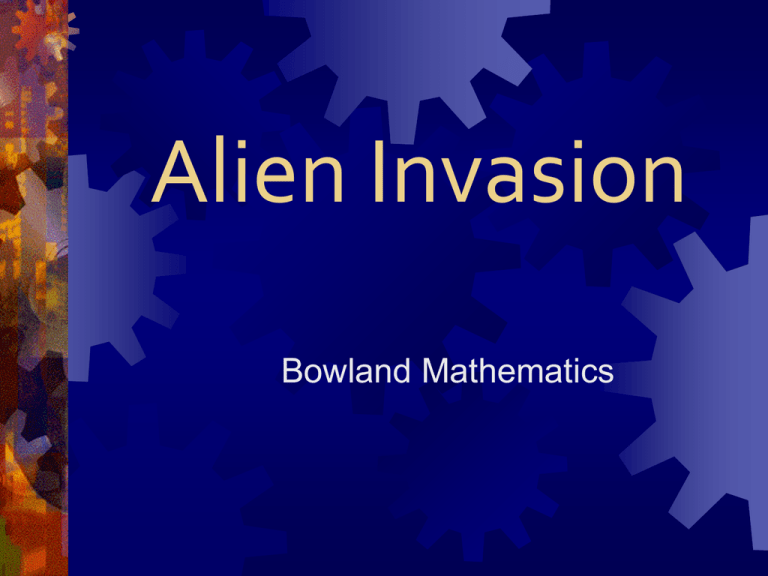
Alien Invasion Bowland Mathematics Mathematical Processes and Applications • appreciate mathematics as an enjoyable activity; • use and apply mathematics to solve problems in familiar and unfamiliar contexts; • appreciate some applications of mathematics; • recognise that mathematics can be represented in different ways; • work logically towards results and solutions; • calculate accurately, using a calculator where appropriate; • make connections within mathematics; • estimate, approximate and check working; • engage in mathematical discussion of results; • relate findings to the original context; Mathematical Content Learning Objectives Lesson 1 estimate and calculate using measures in everyday situations (level 5); use and interpret maps and scale drawings (levels 5 and 6); recognise that all points on the circumference of a circle are the same distance from the centre (level 6); Lesson 1 Learning Points A map ratio is the ratio of the distance on the map to the actual distance on the ground, in the form of a unitary ratio 1 : n, without units, e.g. a scale of 1 cm to 50 m is a map ratio of 1 : 5000, since 50 m is 5000 cm • The scale of a map or drawing should always be stated next to the map. • A distance ‘as the crow flies’ is the shortest distance between two points, measured as a straight line • Points on the circumference of a circle are an equal distance from the centre. • 8 kilometres is approximately 5 miles Mathematical Content Learning Objectives Lesson 2 use the mean, median or mode (level 5) use all four operations with decimals to two places (level 5); solve problems involving direct proportion (levels 5 and 6); Lesson 2 Learning Points Average speed is distance travelled ÷ time taken. The median is less affected by extreme values than the mean. The mode is only affected by how often values in the data set are repeated, not by what those values actually are. The mean gives an indication of all the values but it is more affected by extreme values than either the median or the mode. The mid-range (the mean of the smallest and largest values) can be useful as an estimate of the mean, especially when the data is uniformly distributed. Mathematical Content Learning Objectives Lesson 3 discuss and interpret graphs arising from real situations (levels 5 and 6) Lesson 3 Learning Points A distance-time graph or travel graph describes stages in a journey. Before you interpret a distance-time graph, work out the scales on the axes. The horizontal axis is used for time. A sketch of a graph is not accurate but its shape gives a picture of what is happening to one variable in relation to the other. Two graphs of different stories or situations could have the same shape. Mathematical Content Learning Objectives Lesson 4 generate integer sequences (levels 4 and 5); find and describe the nth term of a sequence (level 6); formulate and solve linear equations (level 6). Lesson 4 Learning Points Terms in a linear sequence increase or decrease by the same amount each time. • The formula for the nth term is the position-to-term rule for the sequence. • You can generate the terms of a sequence by substituting values of n into the formula for the nth term.




